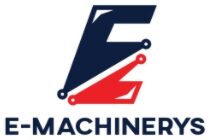The Bollore group’s blue electric car, with its lithium metal polymer battery and 250 km of range, has just been approved. It still remains to carry out road tests and to find a manufacturer. This ambitious project launched in the 1990s continues to advance and could lead to a model marketed in 2009.
Designed by Philippe Guedon in partnership between the Bollore group and Matra Engineering, the Blue Car is at first sight a clever and elegant electric car. No longer than an Austin Mini (3.30 meters), it is wide (1.72 meters), tall (1.61 meters) and modular. Three passengers can take place at the front and the two rear seats fold down to offer a large volume (900 liters). Also lowering the front passenger seats provides 2.3 cubic meters.
It is under the hood and especially under the seats that the main innovation resides: a lithium metal polymer battery on which the engineers began to work in 1990. Funded by the Bollore group, this research resulted in a battery with remarkable capacities , produced by the company Batscap (for “super capacity battery”), a subsidiary of the same group, with an EDF stake (5%).
The technology of this battery is different from that of lithium-ion models that have invaded the mobile electronics, telephones, computers laptops or cameras. In this case, the ionic form of lithium is used. Its disadvantage is a risk of explosion, but it is easily avoidable by an electronic control. Metallic lithium is frankly dangerous. This metal (the lightest of all) reacts with water in an explosive way. The use of polymers manages to make it harmless.
Clean city car
In Batscap’s battery, the elements have three thin films: the anode (a metallic sheet of lithium), the electrolyte (lithium salt included in a polymer, polyoxyethylene) and a polymer for the cathode. Studied since 1990, this process was developed by Batscap and by a Quebec company (Avestor), recently bought by Bollore. In the Blue Car, the batteries weigh 240 kilograms and garner 28 kWh, or 117 Wh / kg (roughly three times the performance of a lead-acid battery). Full recharge takes four hours. They give the blue car excellent performance for an electric vehicle: range of 250 kilometers, speed peak from 125 to 130 km/h and acceleration from 0 to 60 km/h in 6.3 seconds.
This small car ideal for the city was presented at the Geneva Motor Show in 2005 and is now in the second version of the prototype. There are six copies. The Blue Car has just received its homologation and can therefore be driven on the public highway by proudly displaying license plates. The road test phase has now started.
We will see it again at the next Geneva Motor Show, next March, and the Bollore group hopes to market it from 2009. The last step is to find a manufacturer ready to embark on the adventure of electric.
